GAT 036 Yu Araki
On “Re” and Related Works: Part 2
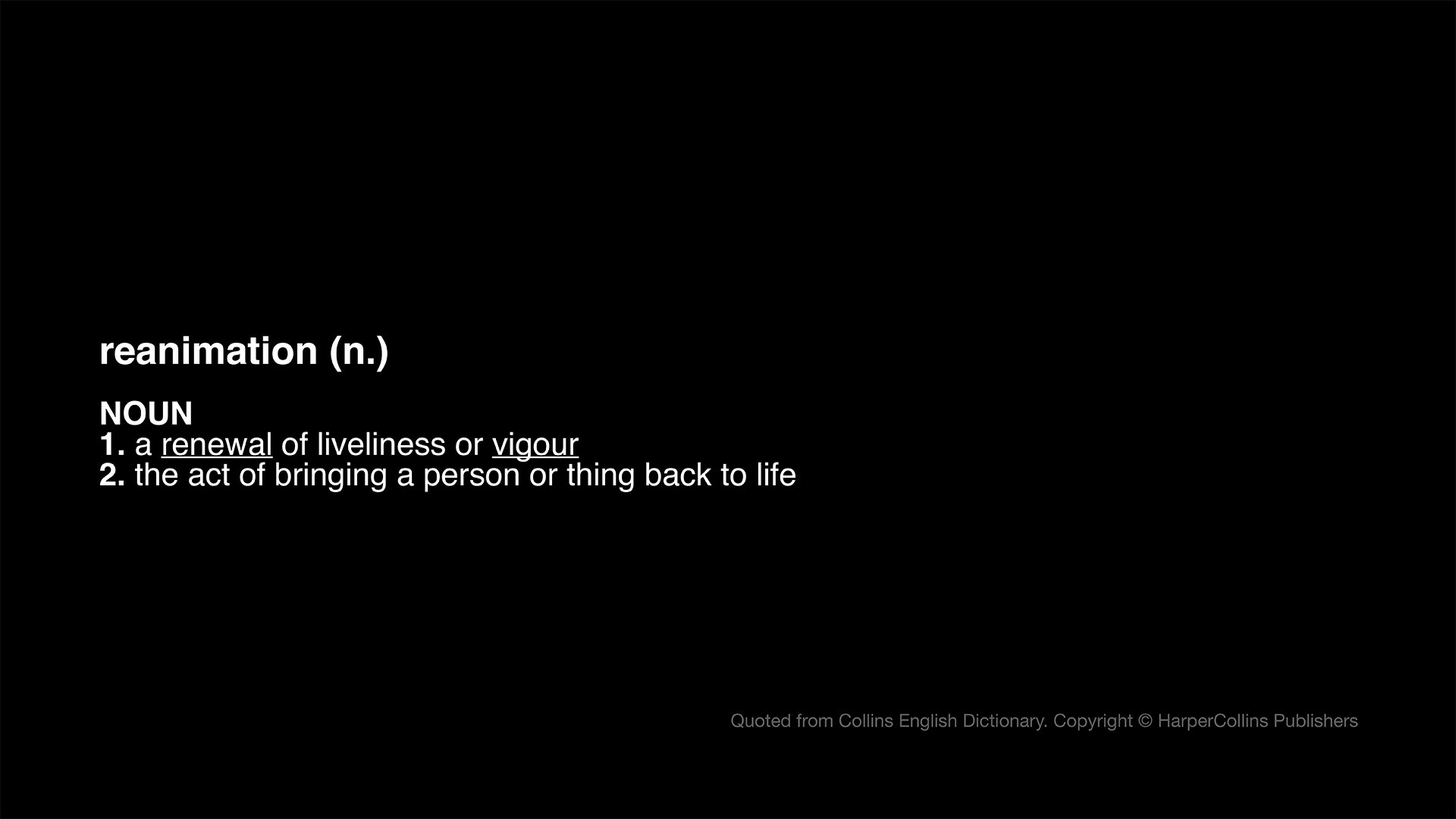
Yu Araki is an artist who primarily works with video installations and actively engages in artistic activities both in Japan and internationally. Having transitioned from sculpture and translation work to filmmaking, he has expanded his practice to include 16mm film and digital video.
The following is an excerpt from a talk held on November 21, 2022. In this talk, Araki reflects on his artistic practice through the lenses of “reproduction,” “reperformance,” and “reanimation,” using the English prefix “Re-” as a key to explore his creative process. The following is an excerpt from a talk held on November 28, 2022.
Edited by Ishii Jun’ichiro
[Read Part 1]
I’d like to share my undergraduate graduation work. This is a one-minute version, but the original was designed as a continuous loop, which is why it was titled «Horses in motion».
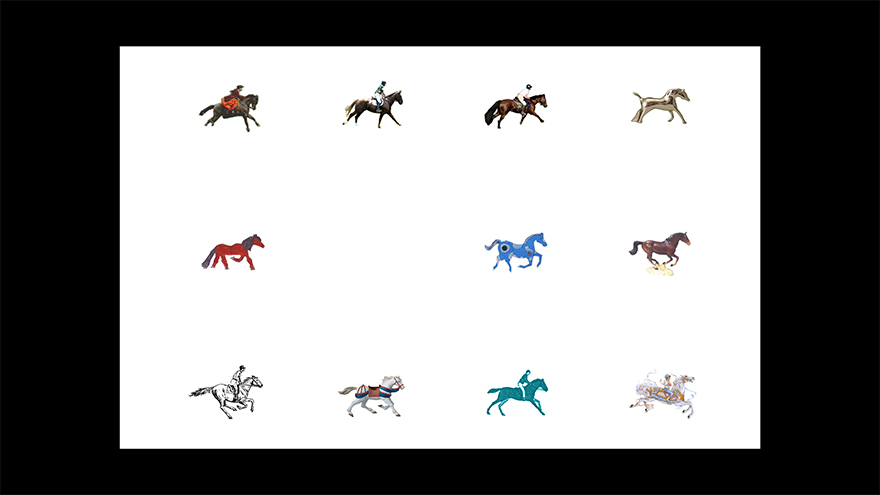
«Horses in Motion» (2007) video stills
Obviously, there’s a reference to Eadweard Muybridge, «The Horse in Motion» from 1878, which is often credited with contributing to the development of moving images. In a way, I created my own version of that idea. It oscillates between recognizing multiple horses, but at the same time, it gets a perception of one horse galloping.
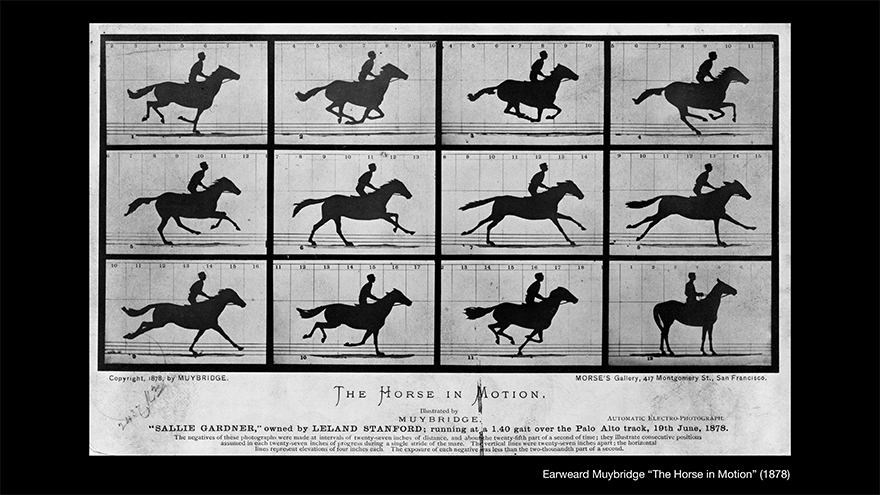
«The Horse in Motion» (1878) Earweard Muybridge
This idea of circulation is also present in another work of mine from 2012, titled «ALMOST DOWN». I created this piece in response to the March 11th, 2011 earthquake that struck the northeastern coast of Japan.
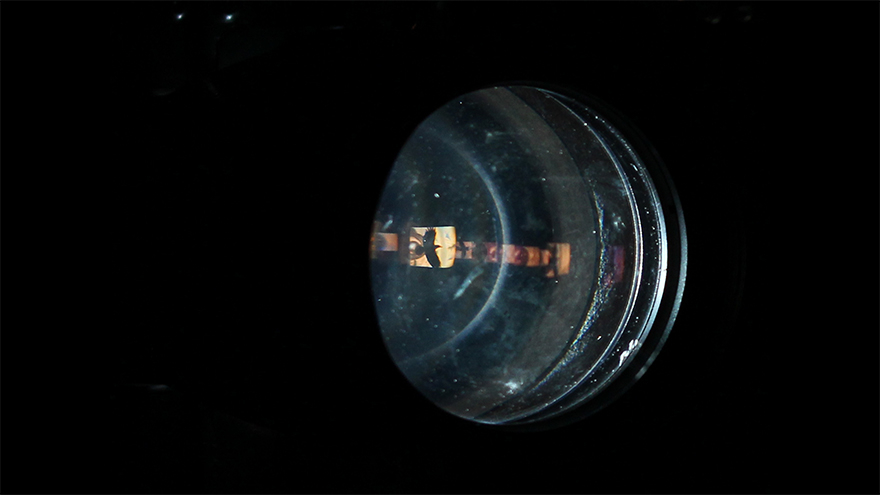
«Almost Down» (2012) HDV transferred on 16mm film / Color / Silent / Looped
In December of that year, while visiting Rikuzentakata, I saw a crow repeatedly attempt – and fail – to crack a walnut. Right in front of me, the same action was being repeated over and over. I kept recording this repetitive action with my video camera. Eventually, the crow flew away without managing to eat the walnut, but I couldn’t help but wonder why it couldn’t crack it. While this is just my speculation,, I thought it might have once relied on passing cars to crush the walnut. However with the tsunami washing away the cars, only the instinct to try cracking it remained.
I wanted to draw a connection between the crow’s circular motion and the 16mm film looper. The looper’s circular, repeating structure seemed to echo the crow’s own repetitive movement.
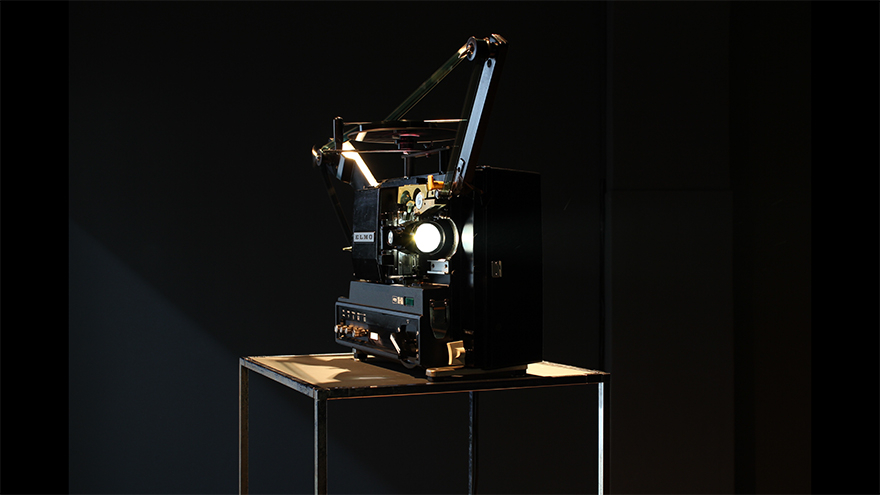
«Almost Down» (2012) Installation view at Tokyo Wonder Site Hongo
Originally, the material was shot digitally, but later I reshot it using 16mm film camera. This decision was driven by the fact that, after the disaster, many digital devices were inoperable, while analog media such as film and photographs managed to survive.
For this work, I used a film projector from a Japanese company called Elmo. It still works, but the maintenance service has been discontinued, and the supply of lamps has become a significant challenge for continuing to project this work.
As for the next work, «Lost Highway (Sweded)», I have long been fascinated by the dual meaning of the word “casting” – both in the sense of “casting” in film and theater, referring to the selection of actors, and in the sense of “casting” in sculpture, where material is poured into a mold to create a form.
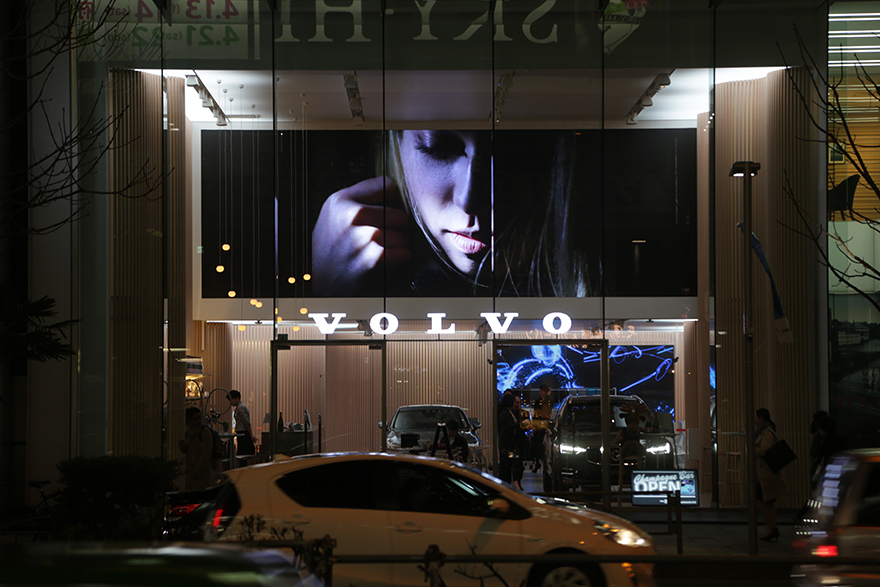
«Lost Highway (Sweded)» (2018) Installation view at Volvo Studio Aoyama / Photo: Yu Araki
This work was created for an exhibition at Volvo Studio Aoyama showroom in Tokyo.
Since Volvo is a Swedish company, I decided to “Swede” it. Are you familiar with the term “Sweded”? [*2] It’s a made-up word coined by Michel Gondry, which became a global internet meme mainly on YouTube, representing a style of recreating films in a low-budget, DIY way. Using this format, I decided to faithfully remake David Lynch’s “Lost Highway” in Japan.
[*2] “Swede” is a film term that refers to remaking a movie in a low-budget, handmade style. It originated from the 2008 film Be Kind Rewind, directed by Michel Gondry.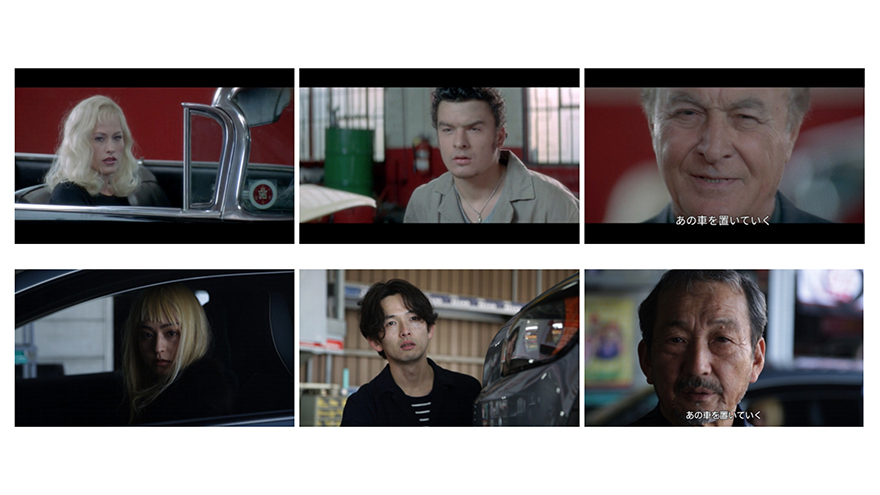
«Lost Highway (Sweded)», Comparison stills with the original film by David Lynch
This slide is meant to compare how much I pursued accuracy, but it was around this time that I became consciously aware of the interesting differences that arise when placing the original next to its imitations or copy.
Returning to the earlier discussion about “casting,” while it refers to pouring material into a mold, in the context of film or theater, casting someone involves choosing a person and fitting them into a “mold” of a character, enjoying the differences that emerge. I find this approach fascinating when thinking about the relationship between the original and the copy.
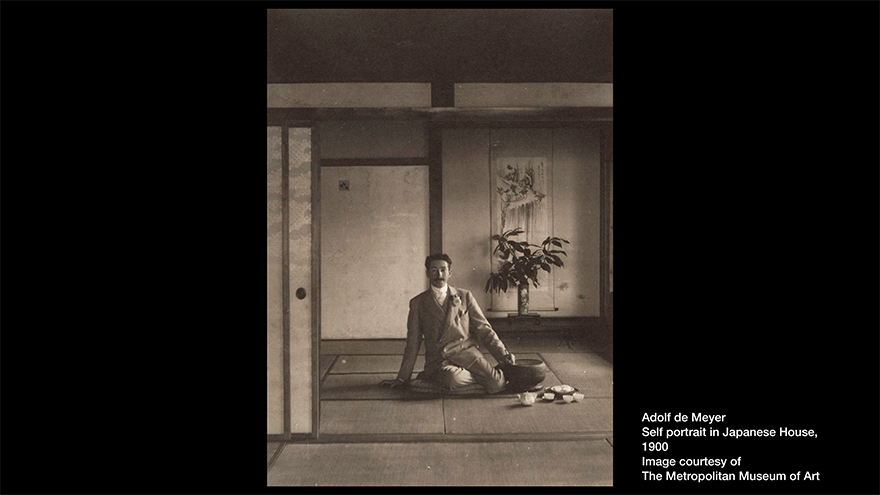
Next, I would like to introduce a work that I exhibited at the “Connections: 150 Years of Modern Art in Japan and France” at the Pola Museum of Art in 2020. While researching this 150-year history, I came across a particular photograph. It was a self-portrait by Adolph de Meyer. What makes this photograph interesting is that, while it has a very rigid composition, Adolph himself is unable to sit in the traditional seiza(正座)posture. I also noticed white dust-like particles burned onto the photographic paper.
As I looked at these white spots on the print, I felt as though I was seeing constellations spreading over the image of “seiza (星座 / a constellation)”, which became the inspiration for this work.
* Araki introduced his work «HONEYMOON» (2020) here.
For the music, I used Puccini’s “Madame Butterfly.”
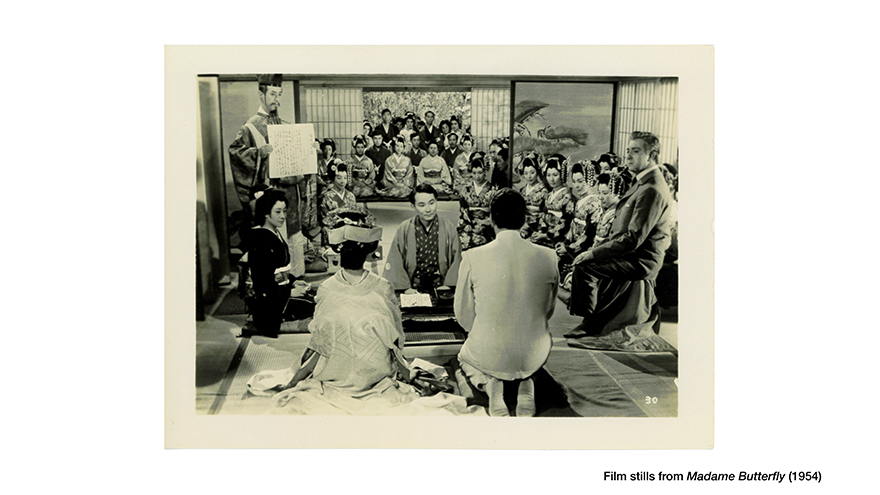
This is a scene from a 1954 Japanese-Italian co-production film “Madame Butterfly”. I felt that international marriage is perhaps the ultimate symbol of cross cultural exchange.
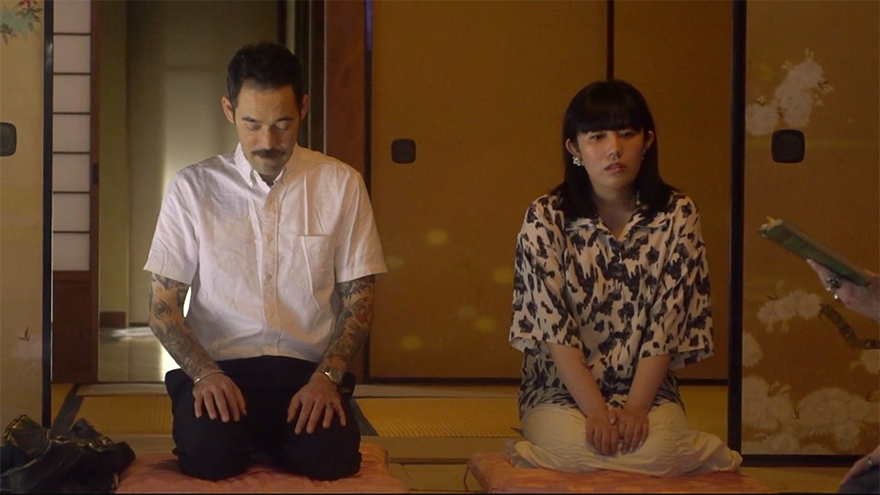
«HONEYMOON» (2020) video still
Based on this idea, I created my own adaptation of the Madame Butterfly.
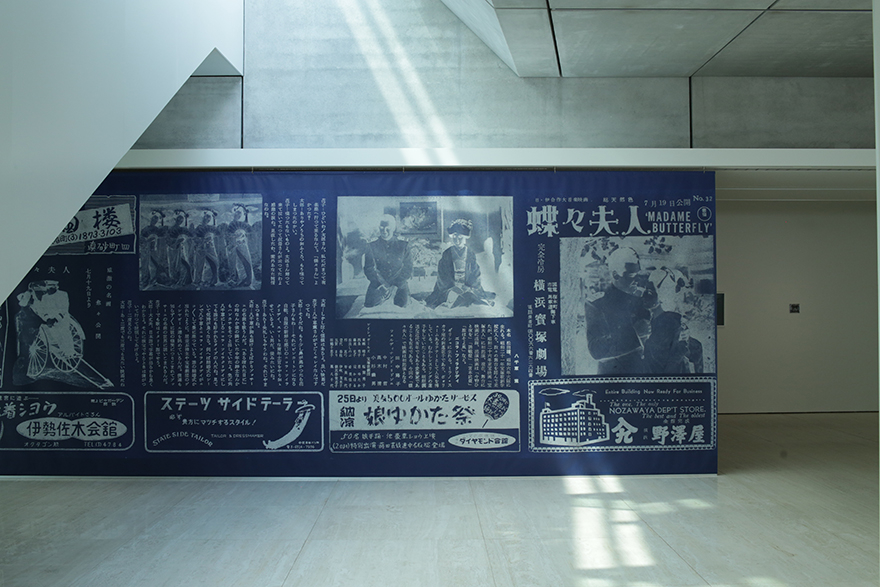
«HONEYMOON»(2020)Installation view at Pola Museum of Art / Photo: Yu Araki
On the back of the screen where the video is projected, there is a printed film pamphlet from the 1954 version of Madame Butterfly. Historically, every time the opera Madame Butterfly was performed, it perpetuated inaccurate representations of Japan, However, this Japanese-Italian co-production film was significant because the Japanese production team actually travelled to Italy’s Chinecitta studios in an effort to correct those misrepresentations as much as possible.
For the installation, I once again focused on the white spots imprinted on this vintage pamphlet. While installing, I punctured small holes at the locations of these spots, allowing natural light to pass through. As a result, an artificial constellation appears on the projected video, blending history with a new visual layer.
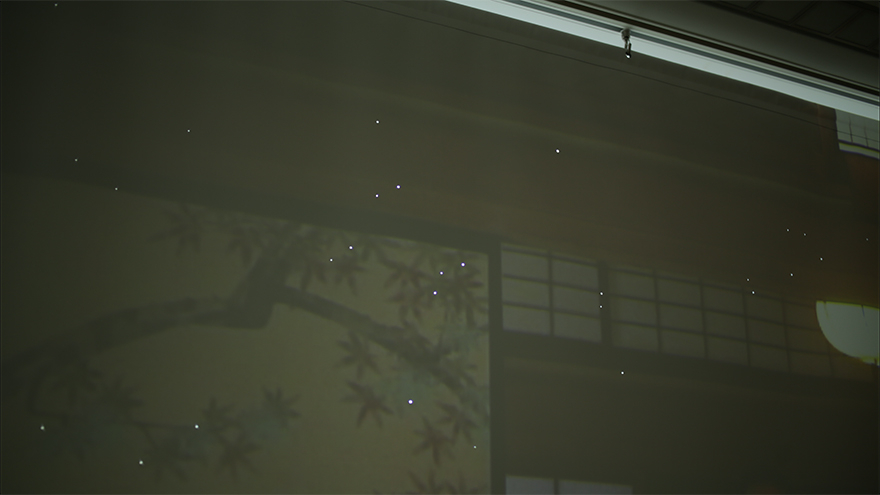
The tattoos featured in the film were a crucial element in the casting process. This is because the act of drawing images on the body is, in a way, an arbitrary form of expression – much like constellations. Just as humans have projected imagined shapes on the stars to create constellations, tattoos also represent a subjective and symbolic form of storytelling.
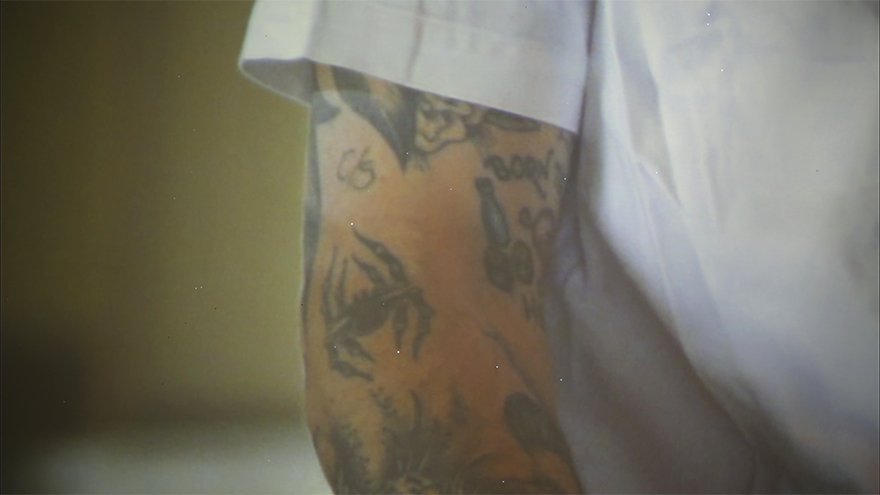
HONEYMOON (2020) Installation view (detail) at Pola Museum of Art / Photo: Yu Araki
Furthermore, one real-world event that inspired this work was Ariana Grande’s tattoo incident.
In 2019, Ariana Grande released an album titled «7 Rings».Being a fan of Japanese culture, she decided to translate the title into Japanese and have it tattooed on her hand. However, she ended up with a mistranslation – she had translated it too literally. As a result, instead of “7 Rings”, her tattoo read 七輪 “shichirin” which actually refers to a small Japanese charcoal grill.
This epic Japanese tattoo fails went viral, spreading widely on social media and drawing widespread criticism. Moreover, her action was also condemned as an act of cultural appropriation.
In today’s world, especially in the U.S., political correctness is strongly emphasized. Within this context, her tattoo was deemed politically inappropriate, sparking significant backlash.
At the same time, I was interested in the fact that no one seemed to question the oddity of charcoal grill itself being named 七輪 (shichirin) – a term that could, in some sense, be interpreted as “Seven Rings”. Even most Japanese people were unaware of this linguistic coincidence.
This made me deeply drawn to questions like: “What is correctness? What is tradition? What is appropriate? That was one of the reasons I wanted to explore seiza [*3] in this work.
Ultimately, I realized that what truly interests me is the concept of reanimation – bringing past events back to life in the present. After all, I have never considered myself being an “original” artist.
[*3] Seiza (正座): In Japanese, the word seiza consists of the characters 正 (meaning “correct” or “proper”) and 座 (meaning “to sit”).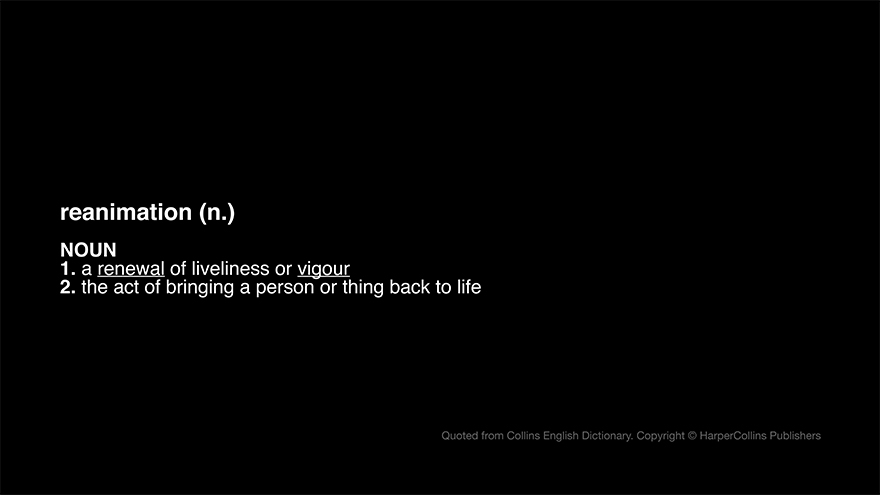
In my creative process, I often feel like I’m making copies of things that already exist. In that sense, what I create is essentially a kind of remake of preexisting works.
Through this process, I reference the past, reinterpret it, and reintroduce it within a contemporary context. You could call it reviving or resurrecting.
As someone inherently imperfect, I see my role as resisting the act of being confined to a mold or labeled. With that in mind, I have also decided to abandon the pursuit of perfect imitation as an imperfect artist. Moving forward, as an imperfect filmmaker, I want to celebrate and highlight differences and reiterations – those elements that fall outside rigid frameworks – by projecting them onto the screen.
Yu Araki
Araki majored in sculpture at Washington University in St. Louis (USA) and furthered his studies at Graduate School of Film and New Media Studies, Tokyo University of the Arts (Japan). As a failed English/Japanese interpreter, his central theme has been revolving the idea of mistranslation. Recent exhibitions include venues such as Sydney Opera House (2021), Pola Museum of Art (2020), Shiseido Gallery (Tokyo, 2019), and Art Sonje Center (Seoul, 2019). His films have been screened at Institute of Contemporary Arts (London, 2021), FIDMarseille (2021), International Film Festival Rotterdam (2018,2020) and many more. During 2017–18, he was a guest resident at Asia Culture Center in Gwangju as well as Rijksakademie van beeldende kunsten in Amsterdam. Araki was selected as one of the finalists for the Future Generation Art Prize 2019. He is scheduled to present a new commission work at the 15th Yebisu International Festival for Art & Alternative Visions in February 2023.
* This talk was held at the Kyoto University of Arts on November 28, 2022.